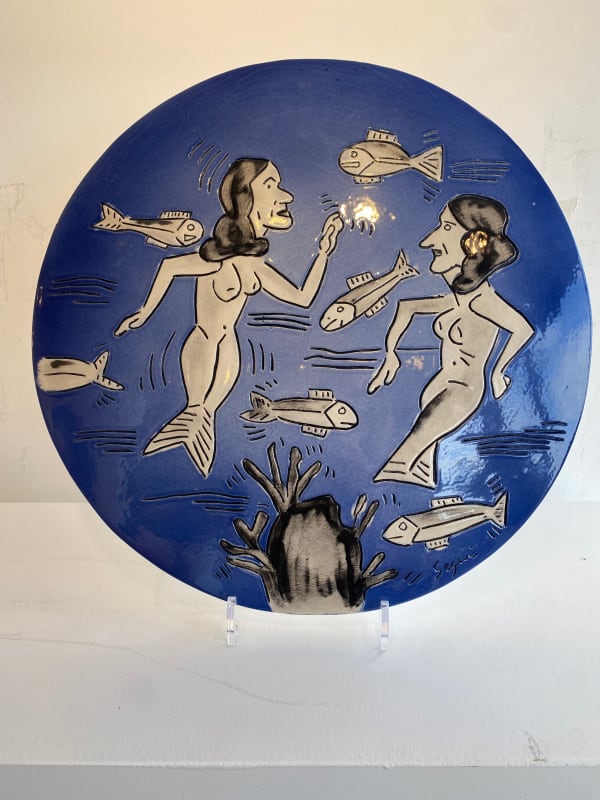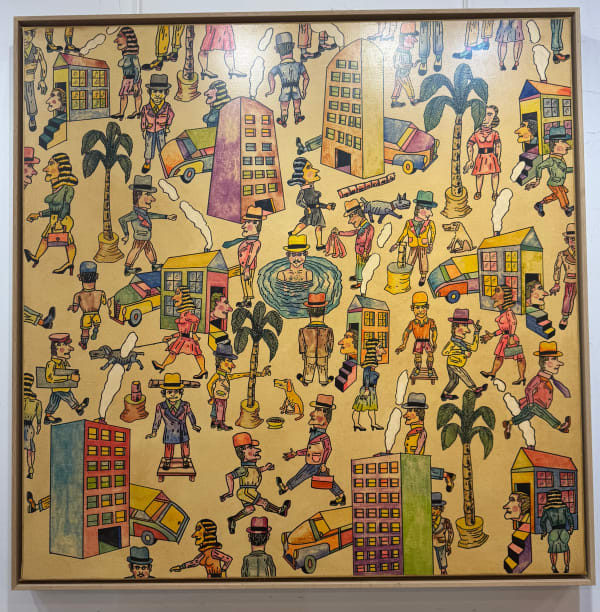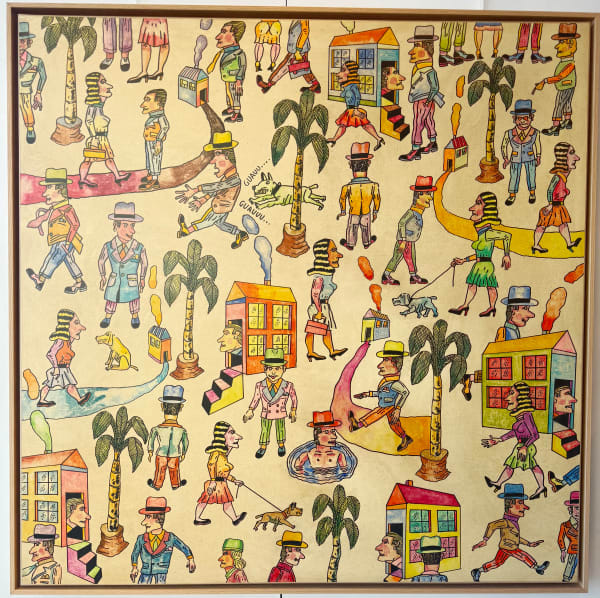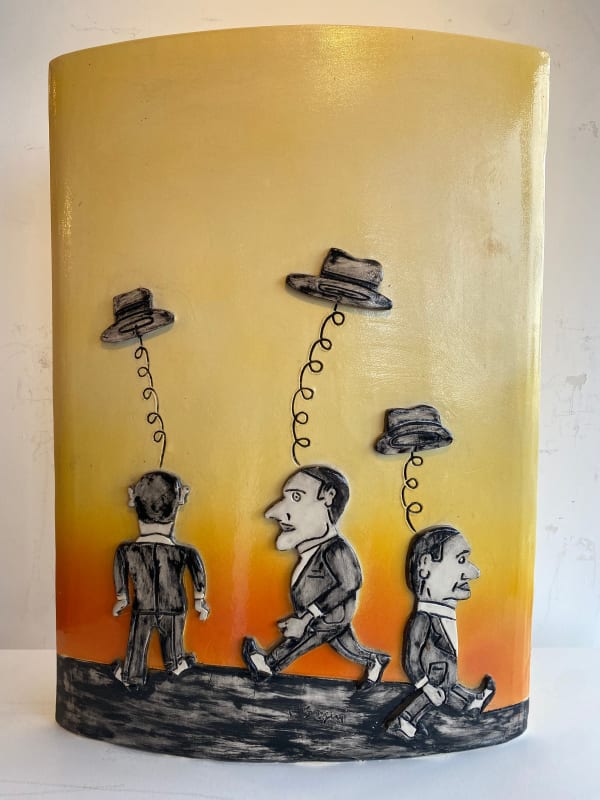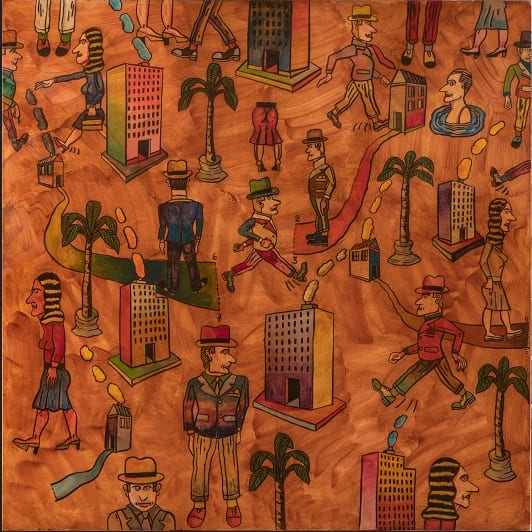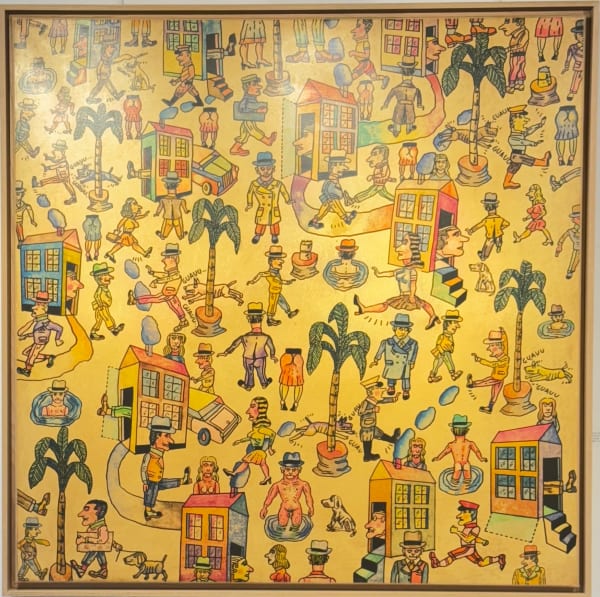Antonio Segui
Painter – Printmaker – Sculptor – A Major Figure of the Latin American and European Art Scene
Born in Córdoba (Argentina) in 1934, Antonio Seguí was one of the most prominent artists of the 20th-century South American contemporary art scene. After studying art in Europe, particularly in France and Spain, he embarked in the 1950s on an extensive journey across Latin America, Central America, and Mexico, where he trained in printmaking.
Settling permanently in France in 1963, Seguí developed a unique and immediately recognizable graphic universe. His paintings, prints, and sculptures depict crowds of characters — small men in suits, hats firmly in place — moving through labyrinthine urban landscapes. One of them, “El Señor Gustavo,” became an iconic figure in his work: an ironic representation of the modern man — solitary, standardized, and lost in the crowd.
Inspired by artists such as George Grosz, Fernand Léger, and Otto Dix, Seguí blended humor, social satire, and visual storytelling in an aesthetic reminiscent of comic art. Through dynamic compositions, he questioned the human condition and the mechanisms of contemporary society.
Multidisciplinary and versatile, Seguí mastered painting, drawing, sculpture, printmaking, and even tapestry. He exhibited in over 200 institutions worldwide, and his works are featured in major public collections such as MoMA (New York), Centre Pompidou (Paris), the National Library of France, and the Museo de Arte Moderno de Buenos Aires.
Antonio Seguí passed away in 2022 at the age of 88. His body of work remains striking for its vibrancy, coherence, and his critical yet poetic gaze on the urban world.
-
 Antonio Segui - Carré Plat 13A 8/8
Antonio Segui - Carré Plat 13A 8/8 -
 Antonio Segui - Cercle Plat 9A 8/8
Antonio Segui - Cercle Plat 9A 8/8 -
 Antonio Segui - Grand Vase Bleu 10B 8/8
Antonio Segui - Grand Vase Bleu 10B 8/8 -
 Antonio Segui - Humo Blanco
Antonio Segui - Humo Blanco -
 Antonio Segui - Perro interrumpiendo el Clima de Paz
Antonio Segui - Perro interrumpiendo el Clima de Paz -
 Antonio Segui - Petit Vase Jaune 13B 8/8
Antonio Segui - Petit Vase Jaune 13B 8/8 -
 Antonio Segui - Respetando las apariencias
Antonio Segui - Respetando las apariencias -
 Antonio Segui - Vase en céramique jaune 14B
Antonio Segui - Vase en céramique jaune 14B -
 Antonio Segui- La Historia Existe
Antonio Segui- La Historia Existe -
 Historia sin Mensaje
Historia sin Mensaje



